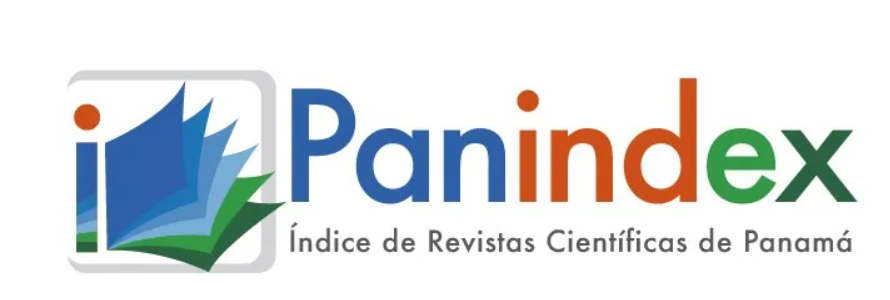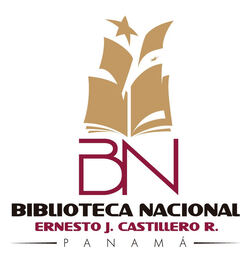The content of the publications and the links suggested in them are the sole responsibility of the authors and not of the Metropolitan University of Education, Science and Technology (UMECIT) or of the journal ORATORES. They are protected by international copyright laws as well as the logos of UMECIT AND ORATORES, hence their reproduction is totally prohibited.
This work is licensed under a Creative Commons Attribution-NonCommercial-NoDerivatives 4.0 International License.
The authors maintain the copyright and transfer the right of the first publication to the journal, with the article registered with Creative Commons Attribution-NonCommercial-NoDerivatives License, which allow others They can download the works published in this magazine and share them with other people, as long as their authorship is recognized, but they cannot be changed in any way nor can they be used commercially.
Authors are recommended to include their work in social networks such as Researchgate and institutional repositories once the article or visible fact has been published on the journal page, without forgetting to include the digital document identifier and the name of the journal.



Abstract
The objective of this document is to show the progress of the research project under the qualitative approach entitled, “Situational analysis of the manuals of school coexistence in the district educational institutions of the fourth locality of Bogota, for the construction of democracy from the strengthening of values in educational institutions “with the authorship of Cornelio Muñoz. It begins with some concepts and contributions on school coexistence and school climate, taken from different authors to reflect on what is meant by school coexistence. Then a description is given of the current situation of school coexistence in some official educational institutions of said Locality and objects of study, to give a look at the reality in which the educational community lives and to realize the dangers to which they are exposed students, a series of contributions made by characters that have contributed to the development of a healthy coexistence to achieve a comprehensive and quality education. Finally, a proposal is made to review and adjust the manuals of coexistence, according to the current context and norms, strengthening the values for a democratic participation, improving school coexistence and contributing to a quality education.
References
Ascorra, A., Arias, H., & Graff, C. (2003). La escuela como contexto de contención social y afectiva. Revista Enfoques Educacionales, 117-123.
Camargo, A. M. (1996). Sobre la violencia escolar. Bogotá: Red académica.
Campo Saavedra, M. F. (20 de Marzo de 2014). Ministerio de Educación. Obtenido de https://www.mineducacion.gov.co/1759/w3-article-339480.html'>https://www.mineducacion.gov.co/1759/w3-article-339480.html
Carr, W. (2002). Una teoría para la educación. Hacia una investigación educativa crítica. Madrid: Morata.
Carrillo, A., Guerrero Cuan, L., León, S., Noriega, S., & Porras, K. (2015). Guía Metodológica para la Revisión y Actualización de los Manuales de Convivencia. Bogotá D.C.: BOGOTÁ HUMANA.
CERE. (1993). Evaluar el contexto educativo. Victoria: Ministerio de Educación y Cultura.
Chaux, E. (2010). Aulas en Paz: Alternativa a la violencia escolar. Periódico de la Policía Nacional de Colombia, pág. 4.
Cornejo, R., & Redondo, J. M. (15 de Octubre de 2001). redalyc.org. Obtenido de http://www.redalyc.org/articulo.oa?id=19501501'>http://www.redalyc.org/articulo.oa?id=19501501
Crespo García, I. (Septiembre de 2001). Cambio cultural y desarrollo humano en contextos minoritarios: El papel de la mujer en una comunidad gitana. Obtenido de https://www.tdx.cat/bitstream/handle/10803/4731/micg1de1.pdf?sequence=1&isAllowed=y'>https://www.tdx.cat/bitstream/handle/10803/4731/micg1de1.pdf?sequence=1&isAllowed=y
Delors, J. (1996). La educación encierra un tesoro. Madrid: Santillana-Unesco.
Erazo Santander, O. A. (2010). Reflexiones sobre la violencia escolar. Revista de Psicología GEPU, 74-86.
Fierro Evans, M. C., & Rojo Pons, F. (2016). Manual para el Mejoramiento de la Convivencia Escolar. México: LONCHERIA DE DISEÑO.
Forero Londoño, O. F. (2011). La violencia escolar como régimen de visibilidad. Revista Internacional de Investigación en Educación, 399-413.
Hoy, W. K., & Miskel, C. G. (1996). Educational administration. Theory, research and practice. Londres: McGraw-Hill.
Lacouture, G. (1996). El legado de Kurt Lewin. Revista Latinoamerica de Psicología, 159-163.
Antelo, E. (1999). Instrucciones para ser profesor. Pedagogía para aspirantes. Buenos Aires: Santillana.
Ascorra, A., Arias, H., & Graff, C. (2003). La escuela como contexto de contención social y afectiva. Revista Enfoques Educacionales, 117-123.
Camargo, A. M. (1996). Sobre la violencia escolar. Bogotá: Red académica.
Campo Saavedra, M. F. (20 de Marzo de 2014). Ministerio de Educación. Obtenido de https://www.mineducacion.gov.co/1759/w3-article-339480.html'>https://www.mineducacion.gov.co/1759/w3-article-339480.html
Carr, W. (2002). Una teoría para la educación. Hacia una investigación educativa crítica. Madrid: Morata.
Carrillo, A., Guerrero Cuan, L., León, S., Noriega, S., & Porras, K. (2015). Guía Metodológica para la Revisión y Actualización de los Manuales de Convivencia. Bogotá D.C.: BOGOTÁ HUMANA.
CERE. (1993). Evaluar el contexto educativo. Victoria: Ministerio de Educación y Cultura.
Chaux, E. (2010). Aulas en Paz: Alternativa a la violencia escolar. Periódico de la Policía Nacional de Colombia, pág. 4.
Cornejo, R., & Redondo, J. M. (15 de Octubre de 2001). redalyc.org. Obtenido de http://www.redalyc.org/articulo.oa?id=19501501'>http://www.redalyc.org/articulo.oa?id=19501501
Crespo García, I. (Septiembre de 2001). Cambio cultural y desarrollo humano en contextos minoritarios: El papel de la mujer en una comunidad gitana. Obtenido de https://www.tdx.cat/bitstream/handle/10803/4731/micg1de1.pdf?sequence=1&isAllowed=y'>https://www.tdx.cat/bitstream/handle/10803/4731/micg1de1.pdf?sequence=1&isAllowed=y
Delors, J. (1996). La educación encierra un tesoro. Madrid: Santillana-Unesco.
Erazo Santander, O. A. (2010). Reflexiones sobre la violencia escolar. Revista de Psicología GEPU, 74-86.
Fierro Evans, M. C., & Rojo Pons, F. (2016). Manual para el Mejoramiento de la Convivencia Escolar. México: LONCHERIA DE DISEÑO.
Forero Londoño, O. F. (2011). La violencia escolar como régimen de visibilidad. Revista Internacional de Investigación en Educación, 399-413.
Hoy, W. K., & Miskel, C. G. (1996). Educational administration. Theory, research and practice. Londres: McGraw-Hill.
Lacouture, G. (1996). El legado de Kurt Lewin. Revista Latinoamerica de Psicología, 159-163.
Lanni, N. D. (Agosto-Septiembre de 2003). Organización de Estados Iberoamericanos. Obtenido de OEI: https://www.oei.es/historico/valores2/monografias/monografia02/reflexion02.htm#2
Milicic, N., & Aron, A. M. (1999). Clima Social Escolar y Desarrollo Personal. Santiago: EDICIONES UC.
Mockus, A. (Marzo de 2002). La educación para aprender a vivir juntos. Convivencia como armonización de ley, moral y cultura. Obtenido de http://www.ibe.unesco.org/fileadmin/user_upload/archive/Publications/Prospects/ProspectsPdf/121s/121smock.pdf'>http://www.ibe.unesco.org/fileadmin/user_upload/archive/Publications/Prospects/ProspectsPdf/121s/121smock.pdf
Mockus, A. (Marzo de 2002). UNESCO. Obtenido de http://www.ibe.unesco.org/fileadmin/user_upload/archive/Publications/Prospects/ProspectsPdf/121s/121smock.pdf'>http://www.ibe.unesco.org/fileadmin/user_upload/archive/Publications/Prospects/ProspectsPdf/121s/121smock.pdf
Oldak Finkler, E. (2017). Programa Nacional de Convivencia Escolar. Guía para el docente Educación primaria. México: Secretaría de Educación. Obtenido de https://www.gob.mx/cms/uploads/attachment/file/249487/PNCE-DOC-3-BAJA.pdf
Oróstegui Restrepo, O. (22 de Junio de 2016). BOGOTÁ cómo vamos. Obtenido de http://www.bogotacomovamos.org/blog/omar-orostegui-restrepo-nuevo-director-de-bogota-como-vamos/
Parra, S. R. (1992). La escuela violenta. Colombia: Tercer Mundo Editores S.A - Fundación FES.
Peñaranda, F. (2006). Hacia una comprensión de la construcción de significados sobre la crianza en el programa de crecimiento. Manizales: Cinde-Universidad de Manizales.
Pérez Juste, R. (11 de Marzo de 2007). Educación, ciudadanía y convivencia. Diversidad y sentido social de la Educación. Bordón. Revista de pedagogía, 239/260.
Rodríguez Jares, X. (Febrero de 2005). educalab.es. Obtenido de http://educalab.es/documents/10180/343913/convivencia_centros_canarias.pdf/d7f1187d-aa42-4d3d-b137-0650b0dffa21
Rodríguez M, D. (2004). Diagnóstico Organizacional. Santiago: Ediciones Universidad Católica de Chile.
Ruiz Silva, A., & Chaux Torres, E. (2005). Formulación de los estándares en competencias ciudadanas. Bogotá: ASCOFADE.
Todorov, T. (2008). El miedo a los bárbaros. Barcelona: Galaxia Gutenberg.
Tomasevski, K. (2004). Corte Interamericana de Derechos Humanos. Obtenido de http://www.corteidh.or.cr/tablas/R08064-11.pdf
Toro A, J. (1992). 7 Aprendizajes básicos para la Educación en la Convivencia Social. Educando para hacer posibles la vida y la Felicidad. Bogotá: Fundación Social.
Valdés, H., Treviño, E., Castro, M., Carrillo, S., Bogoya, D., Costilla, R., & Acevedo, G. (2008). Los aprendizajes de los estudiantes de América Latina y el Caribe. Santiago: UNESCO.
Xesús R, J. (Agosto de 2002). redalyc.org. Obtenido de http://www.redalyc.org/articulo.oa?id=27404405
Downloads
Publication Facts
Reviewer profiles N/A
Author statements
- Academic society
- Universidad Metropolitana de Educación, Ciencia y Tecnología
- Publisher
- Universidad Metropolitana de Educación, Ciencia y Tecnología



















